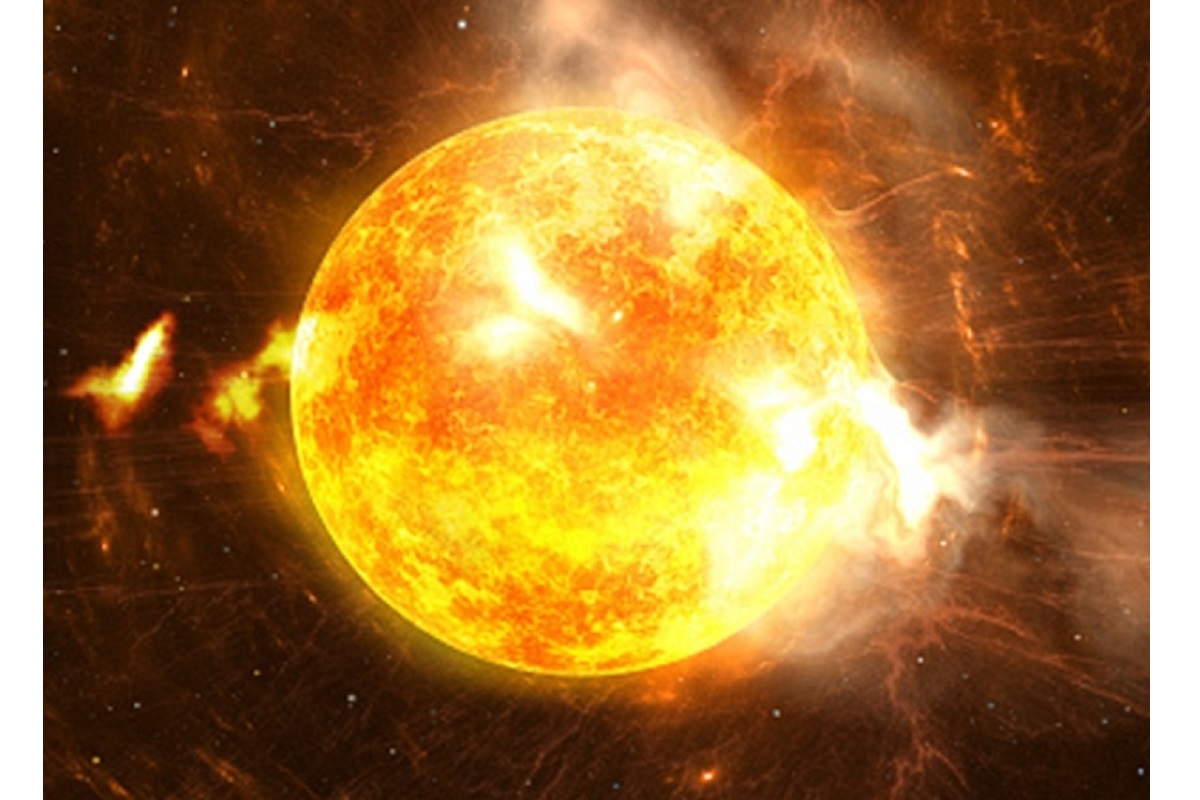The Sun, an explosive celestial object, has been much quieter between 2008 and 2019 than it was between 1996 and 2007, and scientists have quantified that the radial size of its Coronal Mass Ejections (CMEs) are two-thirds the radial size of CMEs in the last decade.
The Sun was the weakest in 2019 during the last 100 years and there has been a significant decrease in the mass, size as well as the internal pressure of explosive phenomena, a study published in the Frontiers in Astronomy and Space Sciences journal said.
Advertisement
Surprisingly, this was also accompanied by a decrease in the average radial size of CMEs – contrary to the expectation that a decrease of pressure in the interplanetary medium will be accompanied by an increase in the radial size of CMEs.
The Sun is known to be very active with sunspots, solar flares, and CMEs — episodic expulsion of huge magnetised plasma from the Sun out into space. Understanding such activity of the Sun, particularly the propagation of CMEs, is important since they cause major perturbations in the Earth’s magnetosphere.
They affect the near-Earth space environment disturbing the orbit of satellites in low-earth orbits, Global Positioning Signals (GPS), long-distance radio communications, and power grids. The intensity of such solar activity is known to vary in 11-year long periodic cycles. It had earlier been traced that Cycle 24 (2008-2019) was weaker than Cycle 23 (1996-2007), and the Sun was weakest in 2019 during the last 100 years.
Scientists led by Dr. Wageesh Mishra of the Indian Institute of Astrophysics (IIA), Bengaluru, an autonomous institute under the Centre’s Department of Science & Technology, have shown that the average radial size of CMEs in the last decades (during solar cycle 24 from 2008-2019) is only two-thirds of its value in the previous cycle.
“This was baffling to the scientists as, for them the reduced ambient pressure implied that CMEs were expanding into interplanetary space to a significantly larger size, expectedly giving rise to large radial size. However, they found the opposite happening,” a release from the Ministry of Science & Technology said.
Explaining this unexpected finding, Dr. Mishra suggested: “The reduced pressure in the interplanetary space in cycle 24 is compensated by a reduced magnetic content inside CMEs, which did not allow the CMEs to expand enough in the later phase of their propagation.”
The scientists’ explanation is further strengthened by the fact that the lack of stronger and bigger CMEs arriving at the Earth during solar cycle 24 had caused reduced geomagnetic perturbations compared to cycle 23.
The team also established that the gas pressure in the interplanetary space in cycle 24 was only 40 per cent of the pressure in cycle 23. Besides, the rate at which the Sun was losing its mass through these episodic ejections was 15 per cent less in cycle 24 than cycle 23. Additionally, the rate of loss of quasi-steady matter by the Sun was also 10 per cent lower in cycle 24.
The work, published in the Frontiers in Astronomy and Space Sciences journal, is co-authored by Professor Nandita Srivastava from Physical Research Laboratory, Udaipur, and Urmi Doshi from the M.S. University of Baroda, Vadodara.
In this research, the team studied the Earth-directed CMEs and interplanetary counterparts of CMEs (ICMEs) using publicly available observations from Solar and Heliospheric Observatory (SOHO) and Advanced Composition Explorer (ACE), both of them missions launched by NASA in 1995 and 1997, respectively.











